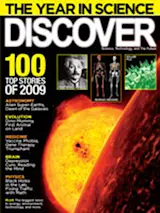Three preliminary flybys of Mercury by NASA’s Messenger spacecraft have given scientists a vast amount of new information about the solar system’s smallest, hottest planet. The only other spacecraft to visit Mercury—Mariner 10, which swung past in 1974 and 1975—left nearly half of the surface unseen. Messenger’s new maps fill in most of the gaps and show that about 40 percent of the landscape has been shaped by volcanism, indicating widespread geologic activity in Mercury’s past. Peering down into impact craters, the probe’s cameras have seen evidence that the planet was shaped by several massive floods of lava billions of years ago.
The most recent flyby, this past September, also clarified why Mercury still has a slight atmosphere even though its gravity is too weak to maintain one for long. Powerful solar winds press through Mercury’s magnetic field to blast away material from the planet’s surface. That material replenishes the ...















